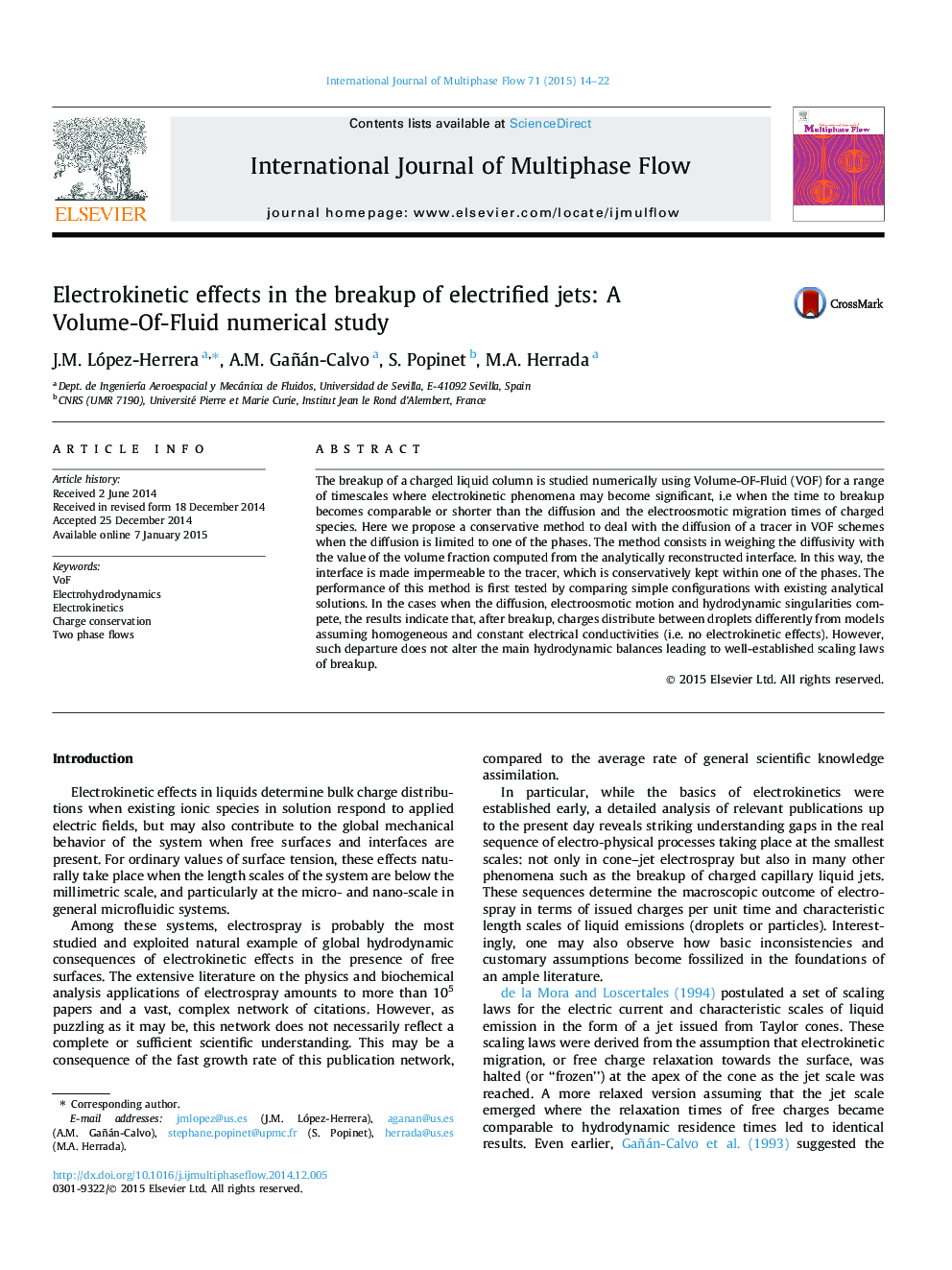| Article ID | Journal | Published Year | Pages | File Type |
|---|---|---|---|---|
| 667619 | International Journal of Multiphase Flow | 2015 | 9 Pages |
•A general numerical procedure to tackle electrokinetic problems is presented.•For low mobilities assuming constant electrical conductivity can be wrong.•The minimum radius time evolution is not altered by electrokinetic phenomena.•The program is freely available as part of the Gerris GNU project.
The breakup of a charged liquid column is studied numerically using Volume-OF-Fluid (VOF) for a range of timescales where electrokinetic phenomena may become significant, i.e when the time to breakup becomes comparable or shorter than the diffusion and the electroosmotic migration times of charged species. Here we propose a conservative method to deal with the diffusion of a tracer in VOF schemes when the diffusion is limited to one of the phases. The method consists in weighing the diffusivity with the value of the volume fraction computed from the analytically reconstructed interface. In this way, the interface is made impermeable to the tracer, which is conservatively kept within one of the phases. The performance of this method is first tested by comparing simple configurations with existing analytical solutions. In the cases when the diffusion, electroosmotic motion and hydrodynamic singularities compete, the results indicate that, after breakup, charges distribute between droplets differently from models assuming homogeneous and constant electrical conductivities (i.e. no electrokinetic effects). However, such departure does not alter the main hydrodynamic balances leading to well-established scaling laws of breakup.
